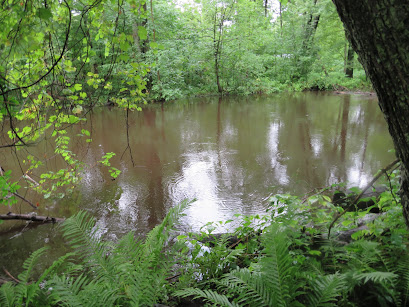A few hours after an early morning thunderstorm, I pause under mostly cloudy skies to view the swollen Pine River as it flows swiftly from north to south under the Schmied Rd. bridge, 4 miles north of Vestaburg in Montcalm County. After being away for a few weeks, I resume my quest to explore the river at access points upstream to its source near Remus in Mecosta County. Along the east bank, I spot an Elm tree with discolored leaves. This dead tissue along the edge of the leaves is a condition called Bacterial Leaf scorch or marginal leaf burn. This symptom develops when sufficient water does not reach the leaf margin cells because bacteria invade and plug the water conducting vessels (xylem) in the plant. Further along, I notice a large patch of blossoming Goldenrod along with a chorus of crickets. Upon closer look, I can see both Canadian and Lanced-leaf goldenrod in the mix as well as some Heath aster in bloom. Nearby, I come upon a showy, 1- inch Milkweed Tussocks Moth caterpillar that will eventually transform into a 1-inch moth (stock photo). With a few drops of rain falling, I make my way back to the river’s edge and pause to look and listen as the water flows by. Moving away from the bank into the muddy floodplain, I hardly notice a 1-inch Wood frog as it blends well against the dark colored ground. Up ahead, I observe a small patch of Smartweed as well as an immature, 8-inch Garter snake, alert to my presence. As the sun breaks through the clouds, I make my way back across the bridge into the dense understory near the west bank where I see a few Green-headed Coneflowers as well as a patch of Water Hemlock, one of the deadliest poisonous plants in North America. It contains a toxin called cicutoxin, a violent convulsant, which acts as a stimulant in the central nervous system. Ingestion of any part of the plant can be fatal, with symptoms occurring from 15 minutes to 6 hours afterward. Turning around and making my way back to the car, I pass by Jewelweed and Wild Cucumber in bloom as well as a 16-inch diameter Cottonwood tree trunk that had been gnawed on by a Beaver awhile ago. While the task was incomplete, I notice the V-shaped cut was made on the correct side of the trunk that would allow the huge tree to fall directly into the river. Finally, back to the car for my 17-mile trip to my Alma home.
On the edge of August,
the river welcomes me back
with her late summer songs.
Duet of Cicadas buzz from
willow tops. Gentle current
babbles softly over bottom boulders.
Immersed in duckweed, Green frogs
strum their stuff. Kingfisher
calls from above while patrolling
water below. Familiar tunes
celebrate my riparian reunion.
D. DeGraaf




